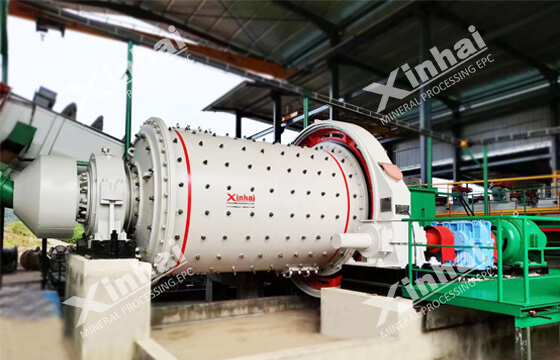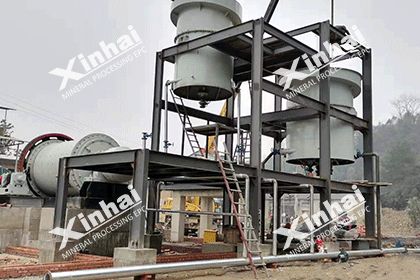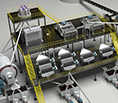How to Extract Aluminum from Bauxite Ore?
 Shirley
Shirley
 Jan 17, 2024
Jan 17, 2024
 2272
2272
If you want to know more details about equipment, solutions, etc, please click the button below for free consultation, or leave your requirements!

Aluminum, a widely used metal renowned for its lightweight nature and excellent properties, is extracted from bauxite ore through a complex process. This comprehensive guide explores the step-by-step procedure involved in extracting aluminum from ore, shedding light on the techniques and transformations that occur to obtain this valuable metal.
01Bauxite Ore Mining
BackThe first step in extracting aluminum is mining bauxite ore, which is typically found in tropical or subtropical regions. Open-pit mining or underground mining methods are employed to extract bauxite ore deposits. Excavators and bulldozers remove the topsoil and overburden layers to expose the bauxite-rich ore.
02Bayer Process
BackOnce the bauxite ore is extracted, it undergoes the Bayer process, named after its inventor Karl Josef Bayer. The Bayer process involves several stages:
a. Crushing and Grinding: The bauxite ore is crushed and ground into fine particles to increase its surface area, facilitating the subsequent chemical reactions.
b. Digestion: The crushed ore is mixed with a hot caustic soda solution (sodium hydroxide) under high pressure and temperature in large vessels called digesters. This step dissolves aluminum hydroxide from the bauxite ore while impurities are left behind.
c. Clarification: The resulting mixture, known as the "green liquor," is separated from the undissolved solids through a process of settling, filtration, and clarification. This step removes impurities and unreacted bauxite particles.
d. Precipitation: Aluminum hydroxide is precipitated from the clarified green liquor by cooling and the addition of seed crystals. The aluminum hydroxide precipitate is then filtered and washed to remove residual impurities.
e. Calcination: The filtered and washed precipitate, known as alumina trihydrate (ATH), is heated at high temperatures to remove water molecules, resulting in the formation of alumina (aluminum oxide).

03Electrolytic Reduction (Hall-Héroult Process)
BackThe next stage in aluminum extraction is the conversion of alumina into metallic aluminum through the Hall-Héroult process. This process involves the following steps:
a. Preparing the Electrolytic Cell: The alumina is mixed with molten cryolite (sodium aluminum fluoride) and other additives to lower the melting point and increase conductivity. This mixture is then placed in a large carbon-lined electrolytic cell.
b. Electrolysis: An electric current is passed through the molten mixture, causing the alumina to dissolve and dissociate into aluminum ions. The aluminum ions are attracted to the carbon cathode, where they are reduced to form molten metallic aluminum. Simultaneously, oxygen ions are attracted to the carbon anode, oxidizing the carbon and producing carbon dioxide gas.
c. Collection and Refining: The molten aluminum sinks to the bottom of the electrolytic cell, where it is periodically tapped off and collected. The collected aluminum undergoes further purification and refining processes to remove impurities and improve its quality.
04Casting and Forming
BackAfter the extraction process, the molten aluminum is cast into various shapes depending on the intended application. Casting methods such as continuous casting, ingot casting, or direct chill casting are employed to produce aluminum ingots, billets, or slabs. These primary forms can then be further processed through rolling, extrusion, or other techniques to create specific aluminum products.

05To Wrap Up
BackThe extraction of aluminum from ore involves a multi-step process encompassing mining, chemical transformations, and electrolytic reduction. From the mining of bauxite ore to the refining of alumina and the final production of metallic aluminum, each step plays a crucial role in obtaining this versatile metal. The advancements in extraction techniques have not only improved the efficiency and sustainability of the aluminum industry but have also expanded its applications in various sectors. By understanding the intricacies of aluminum extraction, we can appreciate the complexity involved in harnessing this valuable resource and continue to innovate in the field of aluminum processing.
 +86 182 3440 3483
+86 182 3440 3483 yanzhang19990421@gmail.com
yanzhang19990421@gmail.com




 Message
Message Chat Now
Chat Now


















